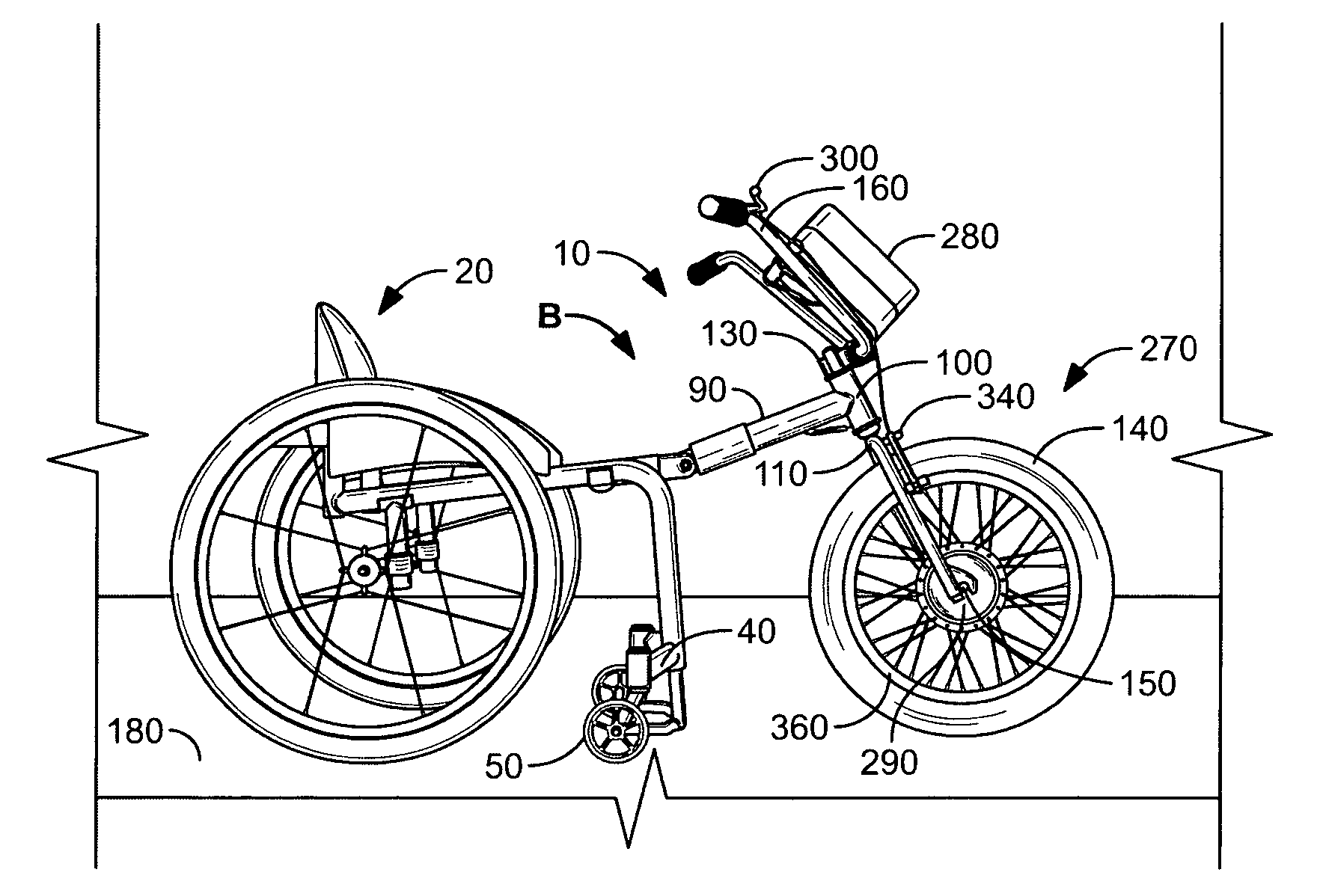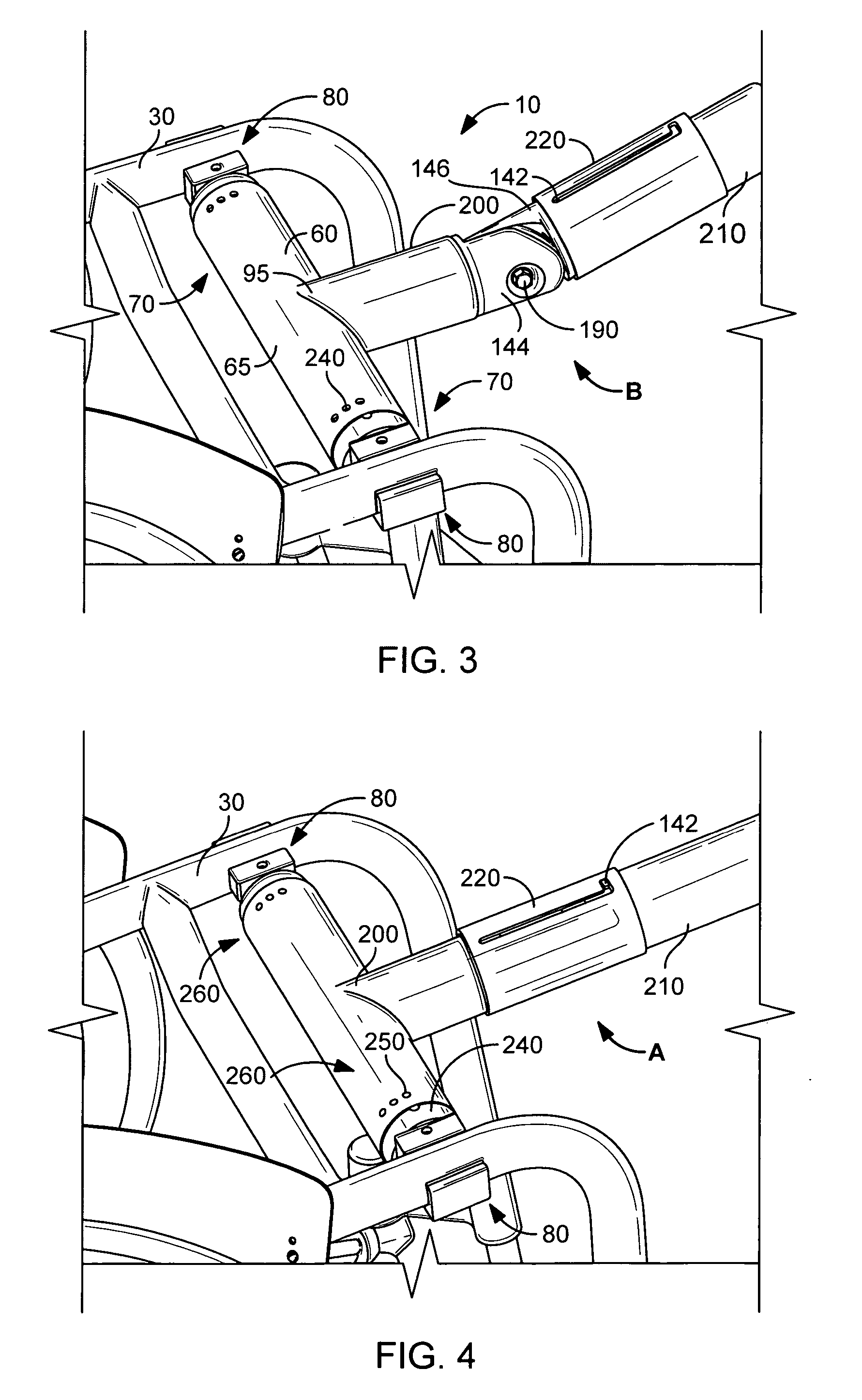Powered attachment for a wheelchair
- Summary
- Abstract
- Description
- Claims
- Application Information
AI Technical Summary
Benefits of technology
Problems solved by technology
Method used
Image
Examples
Embodiment Construction
[0026]FIG. 1 illustrates an improvement 10 for a wheelchair 20 of the type having a pair of generally parallel support bars 30 (FIGS. 3 and 4), a footrest 40, and a plurality of footrest supporting wheels 50. For example, a wheelchair 20 sold under the brand name “Typhoon W.K.-'00” is well-suited for use with the improvement 10 of the present invention.
[0027] The improvement 10 is comprised of generally a crossbar 60 (FIG. 3 and 4), a center bar 90, a front wheel post 100 which includes forks 110, a front wheel 140, and a handlebar means 160. Each end 70 of the crossbar 60 is connected to one of the support bars 30 of the wheelchair 20 with a crossbar mounting means 80 (FIGS. 5 and 6). The crossbar mounting means 80 is preferably a split clamp 81 commonly used to fix items to tubular bars (FIG. 5). The split clamp 81 preferred in the present invention comprises an outer clamp 82 and an inner clamp 84 bolted to each other through mounting holes 86 using an Allan-head bolt with a Nyl...
PUM
 Login to View More
Login to View More Abstract
Description
Claims
Application Information
 Login to View More
Login to View More - R&D
- Intellectual Property
- Life Sciences
- Materials
- Tech Scout
- Unparalleled Data Quality
- Higher Quality Content
- 60% Fewer Hallucinations
Browse by: Latest US Patents, China's latest patents, Technical Efficacy Thesaurus, Application Domain, Technology Topic, Popular Technical Reports.
© 2025 PatSnap. All rights reserved.Legal|Privacy policy|Modern Slavery Act Transparency Statement|Sitemap|About US| Contact US: help@patsnap.com



